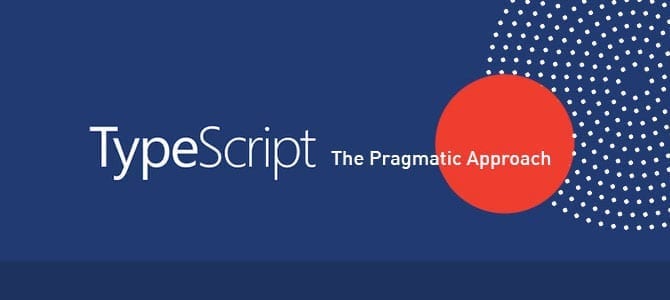A few years ago, data analysts primarily focused on mastering SQL to manage and analyse data. However, the rise of AI-driven tools, particularly Large Language Models (LLMs), is shifting this focus. Today, analysts are increasingly leveraging AI to generate insights from data through natural language prompts.
This shift is driven by several factors, including the rapid advancements in Natural Language Processing (NLP) technology and the growing need for faster, more efficient insights.
According to a 2025 report by McKinsey, businesses using AI-driven analysis have seen a 20% increase in speed-to-insight, underlining the importance of integrating AI tools into the analyst’s workflow. As a result, prompt engineering, the skill of crafting effective prompts for AI models is becoming a key competence for data analysts. In this article, we’ll walk through what prompt engineering really is, why it matters, how data analysts are using it, and what decision-makers can do to stay ahead.
What Is Prompt Engineering?
Prompt engineering sounds like another tech buzzword, but it’s a simple, practical skill. At its core, it’s about writing clear and effective instructions (called “prompts”) that guide an AI model like ChatGPT or other Large Language Models (LLMs) to produce a useful result.
Think of it like giving instructions to a super-smart intern who takes things very literally. The more clearly you explain what you want including format, tone, constraints, and context, the better the result.
For example, if you ask ChatGPT:
“Summarise this dataset.”
You might get a generic paragraph.
But if your prompt is like this:
“Summarise this dataset for a finance executive, highlight top 3 anomalies in revenue by region, and recommend actions in bullet points.”
Now the result is specific, useful, and actionable.
That’s a good start, but prompt engineering doesn’t stop there.
There is more advanced technique in Prompt Engineering such as:
- Zero-shot reasoning (solving problems without examples)
- Few-shot prompting (where you provide examples in the prompt)
- Chain-of-thought prompting (which guides the AI to reason step by step)
This allows teams to get even more precise, reliable, and context-aware responses by crafting clear and specific prompt guides for AI models to generate targeted outputs. According to Tom’s Guide, detailed prompts ensure that the AI understands the context and provides more accurate results.
Like any form of engineering, prompt engineering involves designing, testing, and iterating. It requires a deep understanding of both the data and the problem space. So, it’s not just about asking better questions but also building robust prompting systems that can scale across use cases.
That’s prompt engineering and it’s unlocking a new way for teams to work with data and AI.
Why It Matters for Data Analysts
Data professionals, especially data analysts, already have a lot on their plate. They’re juggling dashboards, ad-hoc requests, and stakeholder reports.
According to Google Cloud, prompt engineering offers a way to make this workload more manageable by helping analysts leverage AI tools effectively to achieve the best results, while AI tools can automate tasks.
Here’s how prompt engineering helps:
- Faster insights – By crafting clear and precise prompts, analysts can guide AI tools to generate quicker, more relevant insights, reducing the time spent on manual analysis.
- Less manual work – With effective prompting, analysts can instruct AI tools to automate tasks like data cleaning, query generation, and summarising reports, streamlining the workflow.
- Smarter decisions – Prompt engineering allows analysts to communicate specific needs to AI tools, helping them highlight patterns or generate hypotheses that may have been overlooked, leading to better decision-making.
Prompt engineering isn’t a replacement for SQL, Python, or R; it’s a new layer that complements them. It’s how your team can bridge the gap between raw data and real business value, especially in high-speed environments.
As AI tools like Large Language Models (LLMs) become more integrated into data workflows, platforms are evolving to make these tools more accessible.
For instance, platforms like Databricks are now incorporating LLMs into their ecosystem. This integration enables data analysts to combine scalable data processing with natural language interfaces, making prompt engineering even more essential for those working with unified data, analytics, and AI workloads.
Real Business Use Cases for Data Analysts Across Industries
Data analysts play a crucial role in a variety of industries, helping teams make informed decisions based on data. Here are some practical examples of how data analysts are using prompt engineering in different sectors:
- Retail: A data analyst uses AI tools to analyse customer purchase data and generate insights on shopping trends, helping marketing teams tailor campaigns to customer preferences.
- Healthcare: A healthcare analyst leverages AI models to examine patient records, identify trends in treatment outcomes, and recommend improvements in patient care.
- Finance: Financial analysts use prompt engineering to quickly analyse financial statements, detecting anomalies and generating insights to support investment decisions.
- Logistics: Logistics analysts use AI to analyse delivery data, identify patterns in shipping delays, and suggest strategies to optimize delivery routes.
These examples show how data analysts are applying AI tools to accelerate their work, enabling better, faster decision-making in various fields. According to Data Ideology, integrating AI into data analytics enhances decision-making by automating processes, predicting trends, and providing deeper insights.
What Should Data Analysts and Decision Makers Do Now?
As highlighted by Dataquest, for data analysts, adapting to the rise of prompt engineering is key to staying ahead in an increasingly AI-driven landscape. Here are some practical steps for data analysts to build their expertise in this area:
- Master prompt engineering – Develop a deep understanding of how to craft precise and effective prompts to get the best results from AI tools like LLMs.
- Experiment with AI tools – Explore different LLM platforms (e.g., ChatGPT, Claude, Gemini) and experiment with various ways to use them in data analysis workflows.
- Collaborate with teams – Share your insights and effective prompting strategies with your team. Collaboration is key in building a collective knowledge base.
Now, if you’re a decision maker overseeing a data team or leading digital transformation, it’s important to support your analysts in mastering prompt engineering. Here’s how you can help:
- Raise awareness – Start conversations about the importance of prompt engineering and how it enhances your team’s capabilities.
- Encourage experimentation – Provide your analysts or data scientists with time and space to explore LLM tools and experiment with how these models can improve their workflows.
- Offer training – Consider running workshops or internal demos to teach the team how to craft better prompts. Prompt engineering is a skill that can be learned.
- Build prompt libraries – Start creating a repository of useful prompts for recurring tasks like reporting, analysis, and summarising customer feedback.
- Hire for it – In some cases, you may want to bring in roles that blend expertise in data and prompt engineering, especially for customer-facing or insight-heavy functions.
By supporting your data analysts in these ways, you help ensure that your team is equipped to leverage AI tools effectively, driving smarter and faster decision-making across the organization.
Final Thoughts: Talking to AI Is the New Literacy
We’ve entered a world where data analysts are no longer just writing queries and coding algorithms; they’re conversing with AI to unlock deeper insights.
Prompt engineering is quickly becoming a new skill for data analysts. Those who master it will work faster, deliver clearer insights, and help their companies make better decisions. The skill isn’t just about using AI; it’s about knowing how to guide them with clear, effective prompts.
If you’re thinking about how to scale your data or analytics team with future-ready skills, Mitrais now offers AI-capable talent through our team augmentation services, ready to help you experiment, deploy, and build with Large Language Models from day one.
Because in the near future, knowing how to “speak AI” might be just as important as knowing how to code.
Reference:
https://www.mckinsey.com/capabilities/quantumblack/our-insights/the-state-of-ai
https://cloud.google.com/discover/what-is-prompt-engineering
https://docs.databricks.com/aws/en/large-language-models/
https://www.dataideology.com/ai-in-data-analytics/
https://www.dataquest.io/blog/top-prompt-engineering-skills-you-need-to-work-with-ai/
https://www.netsuite.com/portal/resource/articles/erp/ai-in-data-analysis.shtml











